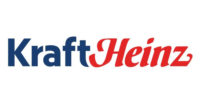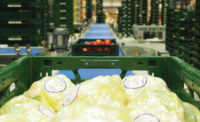6 Reasons to Retrofit your Distribution Center with Future-proof Automation

A modular intralogistics system is a lot faster to install and commission, than building a new distribution center. Courtesy Cimcorp.

When selecting a modular solution, one with a gantry design is a great choice. With this type of system, fresh and perishable goods are housed safely in uniform plastic crates. Courtesy Cimcorp.


Many of the world’s largest grocery retailers are now investing in automated order fulfillment solutions to optimize the handling of fresh fruit, vegetables, bakery items and dairy products across their distribution networks. It’s all possible thanks to modern automated systems, specifically designed to meet the need for speed in fresh food logistics. These solutions can manage the entire fresh food distribution process—including storage and order picking—as one seamless operation.
With everything optimized through automation, grocery retailers can effectively:
- Improve order speed and accuracy.
- Maximize product freshness and minimize spoilage.
- Overcome labor shortages and improve workplace safety.
- And so much more.
Best of all, grocery retailers can unlock all this value without having to deal with the high costs and lengthy timelines of new facility construction. How? By retrofitting their existing distribution centers with future-proof automation. While the idea of constructing an entirely new, customized distribution center is definitely appealing, it’s not always the most feasible solution. New construction is very expensive and time consuming. And once construction is done, companies must interrupt their operations as they uproot from their old facility and move to the new one.
Instead, grocery retailers can optimize their existing distribution centers with flexible, modular technology. Modular systems are made up of individual, standardized cells of automation that can be configured to suit any site and application, even fitting older buildings with low ceilings. Companies get a system customized to their facility’s unique needs, and more modules can be added over time. It’s a future-proof investment, since the solution can grow to accommodate changing business needs for many years to come.
When selecting a modular solution, one with a gantry design is a great choice. With this type of system, fresh and perishable goods are housed safely in uniform plastic crates. The crates are stacked directly on the warehouse floor in high density storage areas. No racking or shelving systems are needed, just a regular industrial floor. Overhead gantry robots quickly pick required SKUs from above, then orders are palletized, loaded, and dispatched with ease.
By retrofitting with modular, gantry-based automation, grocery retailers gain many unique benefits:
- Cost Savings & Sustainability
One big benefit of upgrading operations through a retrofit is cost savings. Labor is becoming more challenging and expensive to retain, while real estate is at a higher premium than ever. It is much more cost effective to boost the intralogistics of an existing building, rather than tearing it down to construct a new one.
Plus, a retrofit is also better for sustainability. It expends far fewer resources, and it will have a smaller environmental impact.
- Fast Installation with Minimal Disruption
Retrofitting is a great option when time is of the essence. A modular intralogistics system is a lot faster to install and commission, than building a new distribution center. There is no need to wait for planning permissions, design, or construction.
Moreover, installation and commissioning can be carried out in phases, module by module, with minimal disruption to operations. Automation integrators can install the systems while operations are continuously running, so orders keep moving smoothly out the door.
- Scalability & Repeatability
Modularity means grocers can first introduce automation in areas where it will generate the biggest impact for a quick ROI. Then, they can gradually expand the implementation in steps, until their distribution center is fully future-proofed.
Modular systems can also be easily “copied and pasted” to multiple facilities across a grocery retailer’s distribution network. This level of scalability secures total system flexibility for continued expansion and future growth.
- All Crates Accessible at All Times
When distributing fresh and perishable foods, quick access to any SKU, at any time, is crucial. Fortunately, gantry robot solutions with floor-based storage not only allow grocers to store more products in less space; they also enable immediate access to any crate in the system in just 9 seconds or less. This accessibility powers unbeatable fulfillment speed, resulting in fresher products on store shelves and minimized waste.
- High Hygiene Standards & Easy Cleaning
Food safety is of utmost importance, so grocery retailers must strictly adhere to food safety regulations. However, traditional storage setups require rows upon rows of racking or shelving, which are difficult to clean for routine sanitation or accidental spills.
Instead, an automated storage and order picking system that uses an open floor concept helps grocery distributors easily maintain fresh food safety throughout the intralogistics journey. Gantry robots can clear the floor of crates in just minutes to create open access for daily or weekly sanitization.
- Built-in Redundancy with No Single Point of Failure
Modular solutions also ensure easy maintenance and continuous operation. If there is a system issue, the robots back each other up. If one gantry robot needs maintenance or a repair, for example, another robot will take on the task of picking across the entire storage area until the original is back online.
On top of that, each module has its own Warehouse Control System (WCS), allowing for independent control when needed. And with a WMS especially built for the needs of fresh food distribution, facilities can better handle seasonal peaks with optimized inventory flow.
Distributors and retailers of fresh and perishable foods face unique distribution challenges that will only grow in the future. But by retrofitting their facilities with automation designed for fresh food intralogistics, companies can start on the path to a lifetime of success in their market.
Looking for a reprint of this article?
From high-res PDFs to custom plaques, order your copy today!








